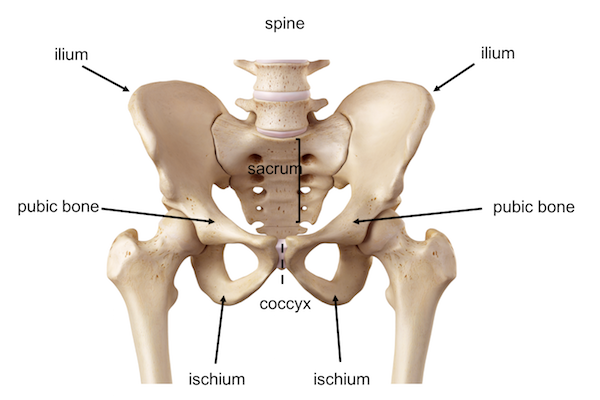
noun, plural pel·vis·es, pel·ves [pel-veez] /ˈpɛl viz/. Anatomy, Zoology.
- the basinlike cavity in the lower part of the trunk of many vertebrates, formed in humans by the innominate bones, sacrum, etc.
- the bones forming this cavity.
- the cavity of the kidney that receives the urine before it is passed into the ureter.
noun plural -vises or -ves (-viːz)
- the large funnel-shaped structure at the lower end of the trunk of most vertebrates: in man it is formed by the hipbones and sacrum
- the bones that form this structure
- any anatomical cavity or structure shaped like a funnel or cup
- short for renal pelvis
n.1610s, “basin-like cavity formed by the bones of the pelvic girdle,” from Modern Latin, from Latin pelvis “basin, laver,” Old Latin peluis “basin,” from PIE *pel- “container” (cf. Sanskrit palavi “vessel,” Greek pelex “helmet,” pelike “goblet, bowl,” Old Norse and Old English full “cup”). n. pl. pel•vis•es
- A basin-shaped structure of the vertebrate skeleton, composed of the innominate bones on the sides, the pubis in front, and the sacrum and coccyx behind, that rests on the lower limbs and supports the spinal column.
- The cavity formed by this structure.
- A basinlike or cup-shaped anatomical cavity.
Plural pelvises pelves (pĕl′vēz)
- The basin-shaped structure in vertebrate animals that joins the spine and lower or hind limbs. In primates, the pelvis is composed of the two hipbones joined to the sacrum. It contains, protects, and supports the intestines, bladder, and internal reproductive organs.
The bowl-shaped group of bones connecting the trunk of the body to the legs and supporting the spine. The pelvis includes the hip bones and the lower part of the backbone.
 Liberal Dictionary English Dictionary
Liberal Dictionary English Dictionary